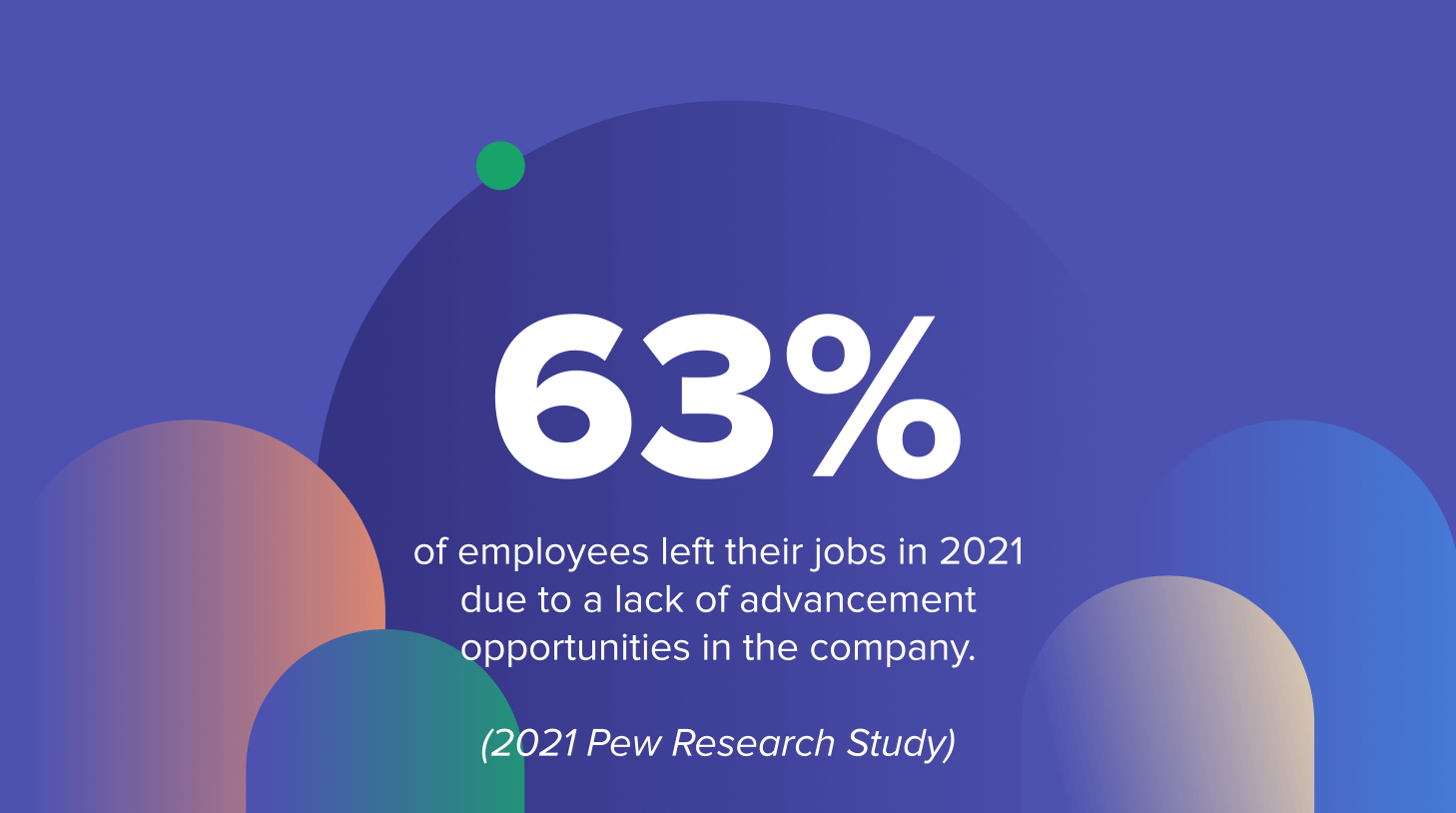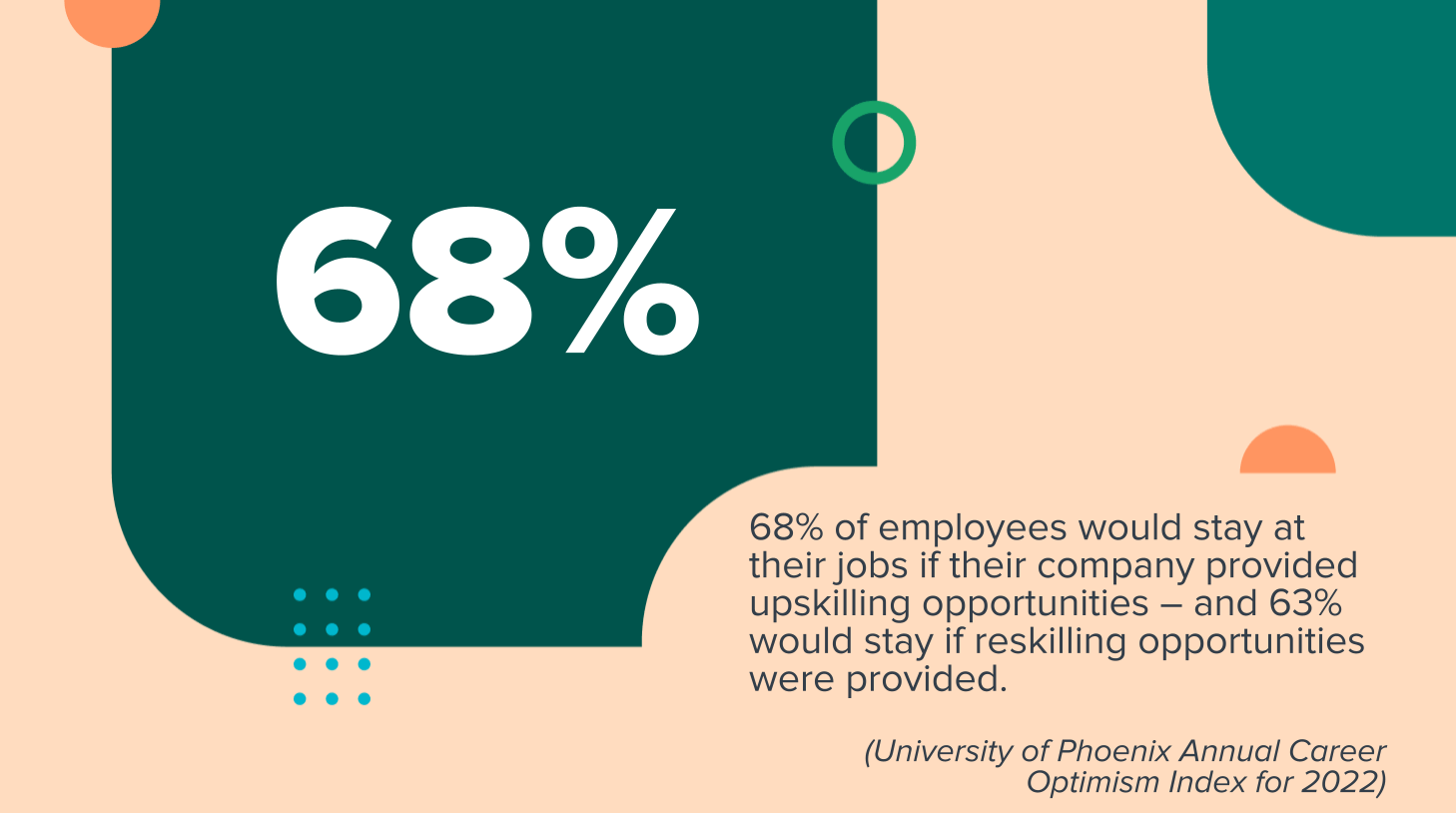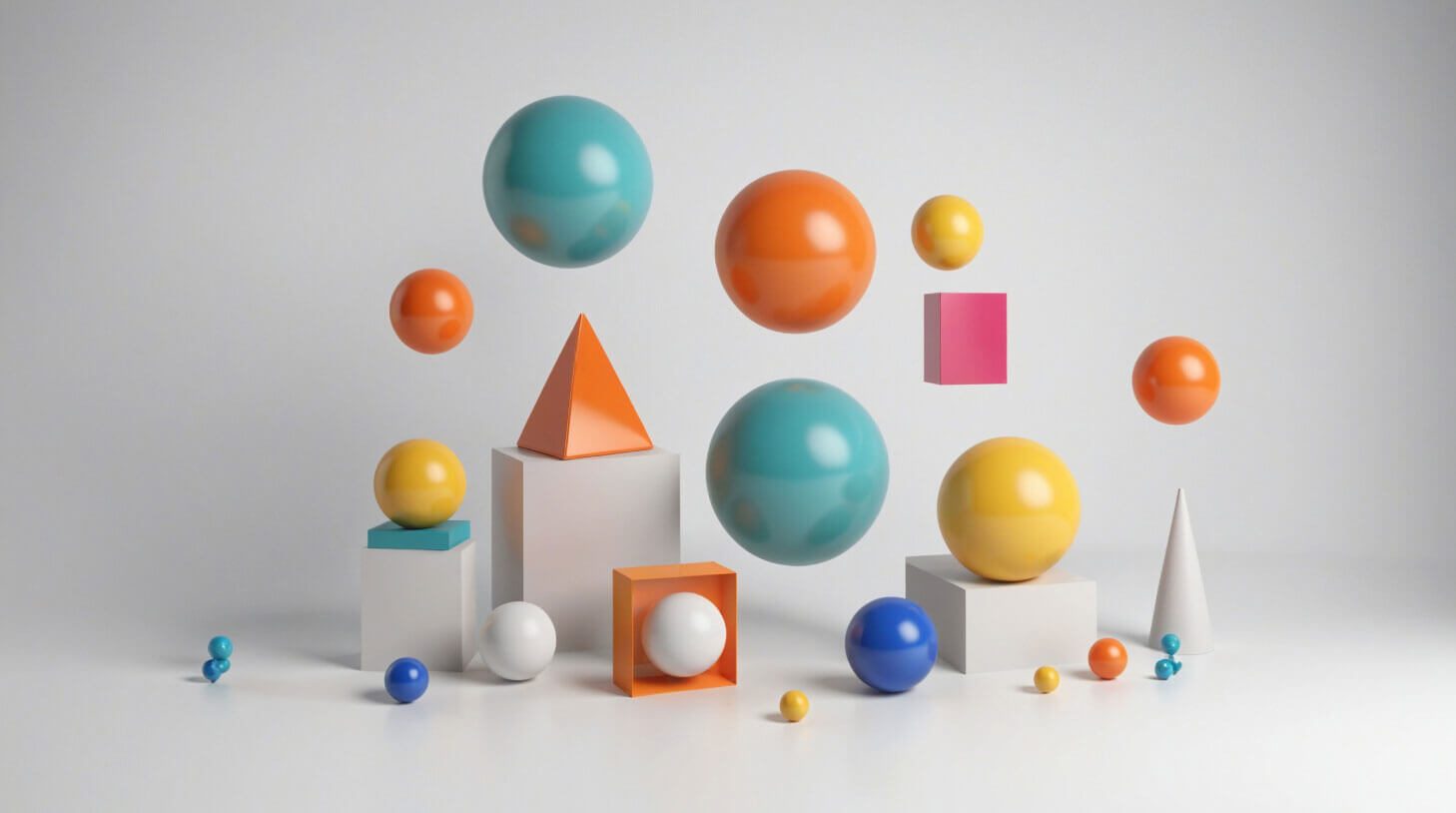Learning & development plans: value, impact, best practices
Did you know that 68% of employees would stay with you if they had upskilling opportunities in your company? HR consultant Lauren Winans shares how investing in learning and development acts as a powerful expression of employee appreciation.

Few business leaders would deny the value of showing appreciation to employees. Most see appreciation as a critical component of a healthy culture that yields huge benefits in the workplace because they know it results in workers who are more engaged, loyal, and productive.
Still, many companies fail in this area. A Workhuman survey revealed that more than half of employees want to see their companies offer more recognition, while a BlueBoard survey showed that 40% of companies have not taken steps to build a culture of appreciation.
Even when bosses take the time to show appreciation, it can often fall flat. Another study on workplace culture that surveyed employees in the US, UK, and China found that 43% of employees who were recognized by their companies felt the gesture was “empty” and “not meaningful.” The study puts organizations on notice that employees expect recognition to be sincere and significant.
So what does meaningful recognition look like? One valuable way to express appreciation is by showing an interest in your employees’ professional development.
Contents
The value of employee learning and development
Essentially, recognition shows employees they are important and serves as an organization’s way of communicating that it sees and values its employees’ efforts and accomplishments. It says, “We’re glad you’re here and we want you to stay.”
Providing opportunities for learning and development is a powerful form of employee appreciation because it acknowledges an employee’s value. It indicates that the employee is seen as a worthwhile investment and communicates that the organization has confidence in the employee and their abilities.
Recent studies support the idea that employees see value in learning and development. A 2021 Pew Research Study showed that 63% of the employees who left jobs that year pointed to a lack of advancement opportunities as a reason. In 2022, a McKinsey and Company study identified a lack of career development as the top reason for leaving a job.
The impact of employee learning and development
The list of benefits that organizations gain from facilitating employee learning and development is long and broad, but almost always begins with improved morale.
As mentioned above, investing in an employee’s development communicates they are a valued part of the organization – a message that can dramatically improve employee satisfaction.
Learning and development also drive employee engagement. As employees become more skilled at their jobs, their confidence level grows, leading to greater motivation, initiative, and output. When widespread, it drives greater overall corporate profitability.
Retention rates can also increase through learning and development programs. The University of Phoenix Annual Career Optimism Index for 2022 revealed that 68% of employees said they would stay at a job with an employer who provided upskilling opportunities and showed that 65% of employees would stay based on reskilling opportunities.
Employees who upskill and reskill their employees also contribute to a more robust talent pipeline. Learning and development make an organization’s workforce more agile and capable of shifting into new positions as opportunities arise. It can also inspire workers to take the steps necessary to advance to higher levels within the organization.
The best approach to creating or enhancing L&D
The ideal learning and development approach aligns with both employee expectations and corporate goals. Consequently, the first step in crafting a program will involve assessing organizational and individual needs.
An assessment of performance metrics can provide insights into skills gaps that exist within the organization, which will help the organization define the learning objectives that are critical for moving the organization forward. General training programs should flow from those learning objectives.
Assessments should also involve interviews and surveys that identify the personal learning and development goals of employees. This is a critical step in communicating that learning and development are meant to support and benefit the employee as well as the organization. Gathering and acknowledging employee input has the potential to increase motivation and participation when learning and development programs are rolled out.
Individual interviews can also be used to create personalized development plans for employees by identifying their career goals as well as any skills gaps that need to be bridged to meet those goals.
These interviews create an environment in which employees and their managers work together to map out steps, such as formal training and stretch assignments, that will contribute to learning and development.
As programs are developed, organizations should acknowledge that the best learning is not a “one-size-fits-all” endeavor.
Learning and development can be delivered through a variety of channels and formats to provide a higher likelihood of success, including online courses, mentoring programs, conferences and seminars, job rotations, and more.
Measuring the effectiveness of programs is also critical to their ultimate success. Organizations can assess the value of learning and development by evaluating participation, employee feedback, and the impact on individual and corporate performance.
Learning and development programs require a significant investment from organizations, but they can also provide a significant return. They are a powerful tool for showing employees how much they matter to the organization and the potential they have for growth.
Ultimately, they result in a workforce that is more engaged, more confident, and more equipped to meet the shifting needs of today’s rapidly evolving business landscape.
Lauren Winans is the Chief Executive Officer and Principal HR Consultant for Next Level Benefits, an HR consulting practice offering clients access to HR professionals for both short-term and long-term projects. Based in Pittsburgh, Pennsylvania, she has 20 years of human resources and employee benefits experience and possesses a deep expertise of HR best practices and what resonates with employees. She founded Next Level Benefits in 2019, offering HR teams access to former corporate HR professionals on-demand when they need them most.
Frequently asked questions
- What makes learning and development an effective form of employee appreciation?
- Learning and development acknowledge employees' worth and potential, indicating that the organization sees them as valuable investments, thereby enhancing their loyalty and productivity.
- How does learning and development impact employee morale and engagement?
- By investing in their growth, organizations send a clear message of their value, significantly improving satisfaction and driving greater initiative, confidence, and output among employees.
- Can learning and development influence employee retention?
- Yes, offering opportunities for upskilling and reskilling can dramatically increase retention rates, as demonstrated by studies showing employees prefer to stay with companies that invest in their professional development. A University of Phoenix index finds that 68% of employees will stay with their company if upskilling options were provided.
- What is the best approach to implementing learning and development programs?
- Tailoring programs to meet both the individual's career goals and the organization's objectives, utilizing various learning formats, and actively involving employees in the planning process are key strategies.
- How should the effectiveness of learning and development programs be measured?
- Effectiveness can be gauged through participation rates, employee feedback, and assessing the impact on individual performance and overall corporate profitability.





